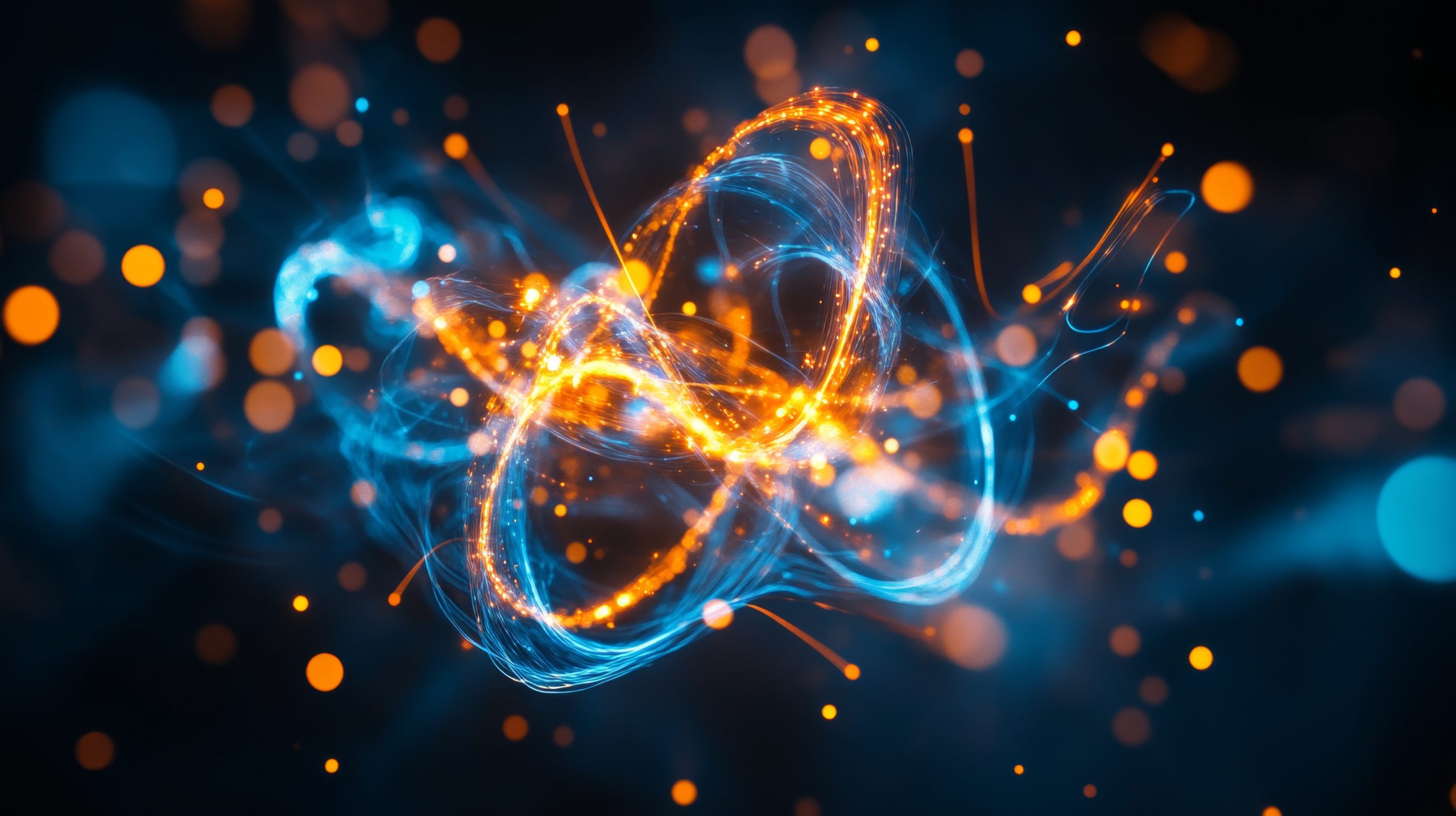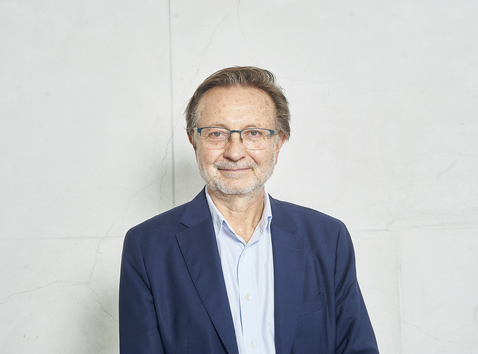Energy
How Carlos Hidalgo Is Paving the Way for Viable Fusion Energy Through Physics-Technology Integration

How Carlos Hidalgo Is Paving the Way for Viable Fusion Energy Through Physics-Technology Integration
Entradilla: At the Future Trends Forum: Fusion Forward, Carlos Hidalgo (CIEMAT) broke down the major engineering and physics challenges that must be solved for fusion to become commercially viable. His message is clear: the key lies in integration—and in validating technologies through a modular, credible approach
Fusion energy is the great energy promise of the 21st century: clean, safe, and virtually inexhaustible. But turning that promise into reality means overcoming immense technical and physical challenges.
At the latest Future Trends Forum held in Madrid—with more than 20 international fusion energy experts, including scientists, entrepreneurs, regulators, investors, and engineers—Carlos Hidalgo, Director of the National Fusion Laboratory at CIEMAT (Spain), delivered a keynote that was both precise and deeply inspiring.
His conclusion was crystal clear: the true challenge in fusion lies in the integration of physics and technology. From producing enough tritium to ensuring reactor safety and enabling remote maintenance, Hidalgo argues that only a modular validation strategy—combined with ambition and credibility—will allow us to move from prototypes to commercial fusion plants.
You can watch Carlos Hidalgo’s talk in this video:
Carlos Hidalgo: “Blankets and Power Extraction (Divertor)” #FusionForward
The Fusion Recipe: Integrating Physics and Technology
Carlos Hidalgo opens his talk with a simple yet powerful idea: the keyword is integration. A fusion reactor can’t be viewed solely as a scientific achievement or an engineering challenge—it must be understood as the convergence of both.
Hidalgo outlines his vision as a “recipe,” with ingredients that must work together:
- On the technology side: tritium, materials, maintenance, and safety.
- On the physics side: plasma confinement, fuel management, impurities, and helium production.
The key, he emphasizes, is not solving each of these challenges in isolation, but making them function together as a real, integrated system.
One example makes his point clear: even if excellent plasma performance is achieved, it’s irrelevant for a commercial plant if the materials can’t withstand the heat or radiation.
Hidalgo stresses that this balance must guide the entire fusion development process—from early prototypes to commercial power plants that can deliver affordable electricity to society.
The Four Technological Pillars of Fusion
According to Carlos Hidalgo, the viability of fusion energy doesn’t hinge on a single breakthrough, but rather on solving four major technological challenges simultaneously. These are the four pillars that must support any functioning fusion reactor:
1. Tritium Self-Sufficiency
Tritium is one of the two fuels required for fusion (along with deuterium). However, it doesn’t naturally occur in sufficient quantities to power a future global energy system.
The only viable solution is for the reactor to produce its own tritium. This is achieved using a breeding blanket–a system that surrounds the reactor and must generate more tritium than the reactor consumes.
In Hidalgo’s words: “We must be able to produce enough tritium. This is one of the essential conditions for any reactor design.”
2. Materials that Withstand Extreme Conditions
The interior of a fusion reactor is an environment like no other:
- Constant bombardment by high-energy neutrons
- Heat fluxes on the reactor’s first wall far beyond what current materials can endure
- Intense radiation and erosion over extended periods
One of the most critical challenges is developing new materials that can withstand these extreme conditions over years of operation. Projects like IFMIF-DONES, based in Spain, are advancing the validation of materials under reactor-like conditions.
3. Remote Maintenance and Competitive Cost
Another key requirement highlighted by Hidalgo is the ability to maintain the reactor without halting its continuous operation.
In such a harsh environment, maintenance must be remote and automated, using robotic systems that ensure speed and reliability. Without this capability, a reactor would need to shut down every time a component wears out—an economically unsustainable scenario.
Moreover, this entire system must be cost-competitive. Fusion isn’t just competing with fossil fuels—it must also measure up to other renewables and nuclear technologies already connected to the grid.
4. Safety and Social Credibility
Ultimately, a fusion reactor will only be accepted if it can guarantee total safety. While fusion avoids the long-lived waste and meltdown risks associated with fission, public perception will be key.
As Hidalgo points out, safety equals credibility: “For society to accept fusion, we must prove it is safe, clean, and reliable.”
The Four Physics Ingredients
Beyond the technological challenges, fusion must also meet strict physical requirements that cannot be overlooked. As Carlos Hidalgo puts it, a reactor needs plasma physics and materials technology to work hand in hand. A major breakthrough in the lab is meaningless if it can’t withstand the conditions of a real-world reactor.
These are the four essential physics “ingredients” in the fusion recipe:
1. Plasma Confinement
Fusion occurs in a state of matter called plasma, where hydrogen nuclei move freely at temperatures exceeding 100 million degrees. To sustain the reaction, the plasma must be confined for a sufficient amount of time and at the right density.
The challenge, as Hidalgo explains, is that this confinement must be compatible with the reactor’s materials. A highly energetic plasma might be a physical success—but if it exposes the reactor’s first wall to heat levels ten times higher than any material can handle, it’s useless for a commercial system.
2. Fuel Control
Fusion fuel (deuterium and tritium) must be precisely distributed within the plasma. Ideally, a “peaked” density profile is targeted at the center of the plasma, which maximizes reaction efficiency.
Achieving this is no small feat—it requires advanced fuel injection and control technologies that still need to be validated.
3. Impurity Management
During reactor operation, impurities inevitably form and contaminate the plasma, reducing its performance. Some come from the erosion of wall materials; others are generated directly by the reaction itself.
If not properly managed, these impurities cool the plasma and make it impossible to sustain the fusion process. That’s why impurity control is a critical component of any reactor’s physical design.
4. Helium as Fusion “Ash”
The most efficient fusion reaction—deuterium-tritium (D-T)—produces helium as a byproduct. While helium is a noble gas and harmless to the environment, inside the reactor it behaves like “ash” that poisons the plasma: it takes up space and lowers reaction efficiency.
It is crucial to have systems in place to continuously extract helium from the plasma and keep its concentration low.
The Modular Strategy
Fusion development faces a fundamental dilemma: should we build a full-scale reactor right away—despite all the risks—or take a step-by-step approach, validating each part of the system first?
Carlos Hidalgo is unequivocal: the most realistic path is modular validation. This means testing the reactor’s critical components independently, at intermediate scale, before integrating them into a complete plant.
“A reactor is uncharted territory. That’s why we need a modular validation strategy—to ensure each piece works before multiplying it by thousands.”
A clear example is the breeding blanket, essential for producing the tritium that fuels the reaction. In a real reactor, this system must cover the entire chamber—but it’s built from repeating modules.
Hidalgo explains that if a single module is validated under real conditions, its behavior can be extrapolated to the entire reactor. In other words: testing a small piece can unlock the leap to industrial scale.
In practice, this strategy is embodied by facilities like IFMIF-DONES, now under construction in Granada, Spain. This center will expose materials and components to neutron fluxes similar to those in a fusion reactor. There, components between 100 and 1,000 cm² in size can be tested—sufficient to confirm their performance before committing to full-scale deployment.
To illustrate the concept, Hidalgo points to Japan’s Rokkasho project, where a full-scale mock-up of a breeding blanket has been built. Since each module is around 100 cm², testing it in isolation provides solid confidence in how it will behave when replicated thousands of times in a reactor.
This modular approach reduces risk and accelerates development:
- Multiple technologies can be tested in parallel
- Limitations are identified before investing in full-scale plants
- It builds industry and public confidence in fusion’s viability
In short, modular validation is how we balance ambition with credibility: moving fast, backed by solid, tested evidence at every step.
Prototypes vs. Commercial Systems
In his talk, Carlos Hidalgo draws a compelling analogy: the transition to fusion will mirror the automotive revolution.
First come the prototypes—basic versions that prove the concept works. Then, commercial systems emerge: efficient, safe, and competitive solutions capable of transforming society.
“When the first car arrived, it was a prototype—four wheels and a rudimentary engine. It worked, but it wasn’t what we now call mobility. Then came the commercial automobile—like a Mercedes—with everything that entails. Fusion will follow the same path.”
In the case of fusion, prototypes already exist. Projects like ITER—the large international tokamak under construction in France—or inertial confinement facilities like the National Ignition Facility (NIF) in the U.S. These prototypes are critical because they demonstrate that fusion physics works.
But commercial systems will need to be different. Hidalgo is clear about which design he believes will shape the future:
“When it comes to prototypes, the most advanced today is the tokamak. But for commercial systems, my bet is clear: stellarators.”
Stellarators are a type of magnetic confinement device that, unlike tokamaks, offer a key advantage: they can operate continuously without the need for pulsed electric currents to maintain the plasma. This makes them ideal candidates for plants that must generate electricity 24/7.
The path from prototypes to commercial systems won’t be linear. A transitional phase will see multiple designs coexist, each validating key technologies. The essential point, as Hidalgo reminds us, is to never lose sight of the end goal: a commercial fusion system that is competitive and adds real value to the global energy landscape.
Fusion for Society
Beyond science and engineering, Carlos Hidalgo highlights a dimension that often goes unnoticed: the social dimension of fusion.
“Society trusts scientists. It may accept that we make mistakes, but it expects us to provide a realistic vision of this fascinating revolution: fusion for society.”
This means that developing fusion is not just a technical challenge—it’s also a matter of trust. Credibility is as important as ambition, because without public acceptance, there will be no large-scale deployment of this technology.
Hidalgo reminds us that fusion offers a set of unique features that make it especially attractive for the future:
- It does not generate long-lived radioactive waste, unlike nuclear fission
- It poses no risk of runaway accidents, as the reaction stops automatically when extreme plasma conditions are lost
- It uses a virtually inexhaustible fuel—hydrogen, one of the most abundant elements in the universe
- It can complement renewables by providing stable, continuous electricity when there’s no sun or wind
However, turning these advantages into public trust requires transparent and realistic communication strategies. It’s not about selling vague promises decades out, but about clearly explaining where we are today, what challenges remain, and how we’re addressing them.
In this sense, modular validation is not only a smart scientific approach—it’s also a trust-building tool: every demonstrated step reinforces the credibility of the fusion project in the eyes of society.
For Hidalgo, the conclusion is clear: fusion is not an end in itself—it is a means to serve society. A technology with the potential to transform the global energy system and contribute to a sustainable, secure, and competitive future.
This article is part of the broader analysis developed within the Future Trends Forum. The full report, “Fusion Energy: A Revolution in Progress” brings together insights from over twenty international experts and outlines five critical pillars for scaling fusion energy as a climate, economic, and technological driver.
Download it here and explore how we can start building tomorrow’s energy system—today.





